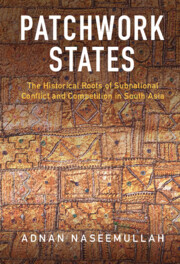Book contents
- Patchwork States
- Patchwork States
- Copyright page
- Contents
- Figures
- Tables
- Preface
- Abbreviations
- Part I Framework
- Part II Historical Roots
- Part III Contemporary Consequences
- Part IV Conclusions
- 9 Researching the Legacies of Colonial Rule
- 10 The Patchwork State in Comparative Perspective
- Book part
- References
- Index
9 - Researching the Legacies of Colonial Rule
from Part IV - Conclusions
Published online by Cambridge University Press: 09 June 2022
- Patchwork States
- Patchwork States
- Copyright page
- Contents
- Figures
- Tables
- Preface
- Abbreviations
- Part I Framework
- Part II Historical Roots
- Part III Contemporary Consequences
- Part IV Conclusions
- 9 Researching the Legacies of Colonial Rule
- 10 The Patchwork State in Comparative Perspective
- Book part
- References
- Index
Summary
This first concluding chapter discusses the ways that social science literature has analyzed the legacies of colonial rule, and argues that colonial state-building may represent a more fruitful approach to analyzing complex regimes and their long-term consequences. It presents a discussion of the logic of historical legacies in relation to the comparative-historical framework of critical junctures and path dependency. It then discusses the drawbacks to dominant approaches that focus on causal inference in assessing colonial legacies.
Keywords
- Type
- Chapter
- Information
- Patchwork StatesThe Historical Roots of Subnational Conflict and Competition in South Asia, pp. 235 - 249Publisher: Cambridge University PressPrint publication year: 2022

